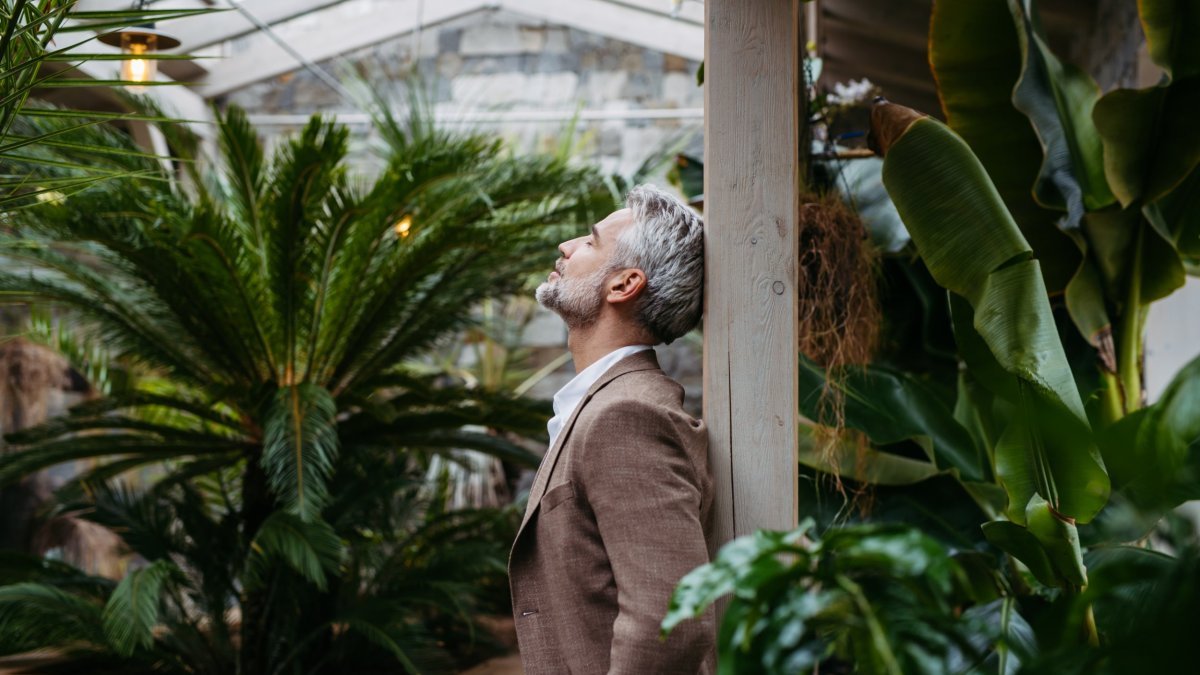Mindfulness training is becoming increasingly popular and can now be offered in the workplace, schools, and even on TikTok.
However, although the technology is intended to relieve stress and depression, it can sometimes exacerbate mental health issues.
The practice can also cause strange mental experiences, such as feeling detached from your body, according to the study. “You need to know what to expect to make an informed decision,” says Dr Julieta Galante of the University of Cambridge, who conducted the study. “The priority should be to make people aware.”
For those who haven’t tried it yet, mindfulness is a simple meditation technique that involves focusing on your thoughts, emotions, or external sensations, like the ticking of a clock.
The aim is to help people stop dwelling on things that cause them unhappiness or stress, and studies have shown it can reduce people’s feelings of depression and anxiety – as effectively as taking antidepressants or undergoing psychological therapy, according to NHS guidelines.
However, this approach is increasingly being offered to people without these conditions as a stress relief and relaxation technique.
In the latest study, Dr Galante looked at the effects of an eight-week mindfulness course in university students, who were randomly assigned to either receive the training or regular mental health support as needed.
As expected, students who took the course reported less stress around end-of-year exams, but they were also more likely to report several unusual experiences, including what are known as altered states of consciousness.
Some of these are pleasant, including spiritual experiences and feelings of bliss, but other sensations, including an “out of body” feeling, can be strange or frightening.
“You start to feel like the boundaries of your body become a little blurred, and you lose track of where your body ends and the universe begins,” says Galante, who has experienced such a sensation while meditating. “The more intense experience is that your body feels larger than it actually is, like your body is reaching out into the walls of the room.”
In other studies of mindfulness practitioners, people report feeling as if they are not there, as if they are watching themselves, or as if they have detached from their body.
Dr. Galante said such experiences can also occur in everyday life, such as during deep emotions like sadness, love or spirituality.
But in her study, students who received mindfulness training were more likely to experience out-of-body feelings than students in the comparison group: 42 percent vs. 26 percent, respectively, after one year.
And some people who completed the course reported experiencing strange, unexpected sensations. “Most experiences occurred during the mindfulness practice, but it’s not uncommon for them to occur at other times,” Dr Galante said.
The finding makes sense, as modern mindfulness techniques grew out of ancient Buddhist meditation practices that aimed to help people feel one with the universe.
“An out-of-body experience would indicate insight into the nature of reality, because for Buddhists, the nature of reality is the absence of a self,” Dr Galante said.
Willem Kuijken of the Oxford Mindfulness Centre, who was not involved in the study, said there is solid evidence that mindfulness can help reduce depression and anxiety. “Mindfulness meditation is potentially a very powerful way of training the mind,” he said. “Anything that works can have side effects.”
But this latest study isn’t the first to identify potential harms from mindfulness and meditation: Other concerns include increased anxiety and stress for some people.
It’s unclear how common these incidents are, but a recent US survey found that roughly one in 10 people affected reported having such a negative experience that lasted for a month or more afterward.
“The public needs to be aware that mindfulness typically puts people into an altered state of consciousness, which can be pleasant or unpleasant,” said Miguel Farias, a meditation expert at Coventry University.
“The problem right now is that this industry is huge and there’s no warning that some people may have unpleasant experiences as a result,” he said.
“The public needs to know that this isn’t just like relaxing in a bath. It’s much more than that for many people.”
What is Mindfulness?
Mindfulness is a simple form of meditation designed to reduce symptoms of anxiety and depression.
This technique involves sitting quietly for a while and paying attention to internal or external sensations. For example, you might begin to notice the feel of your clothes against your skin or the ticking of a clock while breathing slowly and deeply.
When a troubling thought comes into your mind, you should try to simply be aware of its presence rather than allowing it to dominate you.
Mindfulness can be practiced for just a few minutes a day or for a longer period of time. Some people recommend cultivating mindfulness as part of your daily routine, such as running your hand along the banister as you walk up the stairs and noticing the sensation on your skin.
In the past, mindfulness was primarily learned through teacher-led courses, but now there are many apps and online courses available for self-study.


